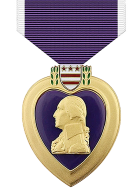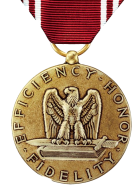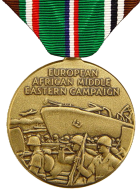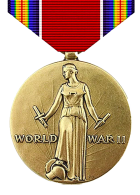Through North Africa, Sicily, Omaha Beach, France and Germany, you and I were inseparable foxhole buddies. My hard Bon Bon candies in exchange for your bouillon cubes, remember? Did you ever fully recover from the constant reoccurrence of yellow jaundice? Remember the fully equipped sniper’s rifle captured after D-Day near Bayeux? Remember a little French boy, about fourteen years of age, who tagged on to me, whose name was Ferdinand Lassibile, Freddy for short? He saved the life of one of our aviators who was shot down. He went on several patrols with me and once when we captured a German prisoner in civilian clothes who spoke fluent French, Freddy was able to thoroughly interrogate him. I wonder where he is now? Do you recall your telling’Wae DDay was planned for June 5th, but the weather was so bad it had to be postponed?
Herb, did you know my small landing craft, LST 66, was hit by German artillery as we headed towards Omaha beach, second wave, on June 6, 1944 and that two men were decapitated just a few yards from shore and four of our buddies were seriously wounded? One died in my arms. Braddock and I did what we could for the ‘Wounded. Lieutenant Burnett recorded the action and I received a Bronze Star. Do you remember Omaha Beach, second wave? No trees, no bushes, no sand dunes, no cover. And most of us were seasick from the rough waters crossing the English Channel. And the barbed wire and iron stanchions stretching out of the water for miles with so many of our buddies, from the first wave, riddled with machine gun bullets, hanging on the stanchions,lifeless, and hundreds of others floating face down with just their knapsacks visible above water. You never did know how I got off that beach alive. I have been unable to reveal this to anyone until today.
The last time I saw you was on September 1944, in a place we nicknamed ”Coffins Corner”. The cover I used was a pile of dead buddies and for almost fifty years I have tried to erase that mesmeric picture from my memory. Not many understand or are capable of comprehending an experience such as this and I do not expect them to. But you dear friend would know and feel what I have felt all these years by being there and so my search for you continues.
The last time I saw you was on September 1944, in a place we nicknamed “Coffins Corner,” on the German Seigfried line, just outside of Aachen, where I was wounded by a German mortar shell while guarding a captured pill-box. For almost fifty years I have thought about our comradeship and how many times you saw me pinned down from atop a command post. I often wonder what happened to PC Clark whose Tommy gun accidentally went off and the bullet went through Lt. Burnett’s pants and just missed my right toe by six inches.
I wonder where Kidd, Patella, Hewitt, Falleta, and DeAngelo, who was accidentally shot while demonstrating a new machine pistol, are today? Do you recall the diary I took from a German prisoner on DDay? Did you know I kept a record of each day from June 6, 1944 until September 28, 1944? Here’s a tidbit dated June 20, 1944. “God what a night, torrential rain and German artillery fire kept me awake in our foxhole most of the night. My helmet came in handy for bailing us out. Siegel, God bless him, can sleep anywhere and he snores. He sleeps and relies on me being a light snoozer and that I will stand guard. I voluntarily dig the foxholes. He outranks me. But I love him.” Herb, in this little book are names we remember and must never forget. Colonel Matthews, Major Dowd, Lt. Duckworth, Medical Staff Sergeant Raymond Lepore my unforgettable buddy, Buschlen, Mapes, Rice, Young, Pop Wilzcek and so many more whose names I have forgotten but whose glory remains intact.
But for the grace of God, I am one of the very few remaining original E&H Company, 16th Infantry, First Division cadre, and I will never ever forget. You would be interested to know, Herb, that in 1972 I became a published author. My writings, Herb, are post-war reflections on coping with death and dying. A hangover from WWII. Finally dear friend, I hope you are still with us, and if not, I pray we may meet again in another time, another space, another place, and in a better world.
Jess Weiss refound his wartime buddy Herb Siegel, in his own words: "On the 50th Anniversary of D-Day June 6, 1994, I wrote an article (attached) that was published and NBC called every Herb Siegel in the US telephone book. They found him and sent us both back to Omaha Beach to tell our D-Day experience. Tom Brokaw & Katie Couric told our story in detail on their "NOW" program that was aired nationally & internationally".
Jess E. Weiss









